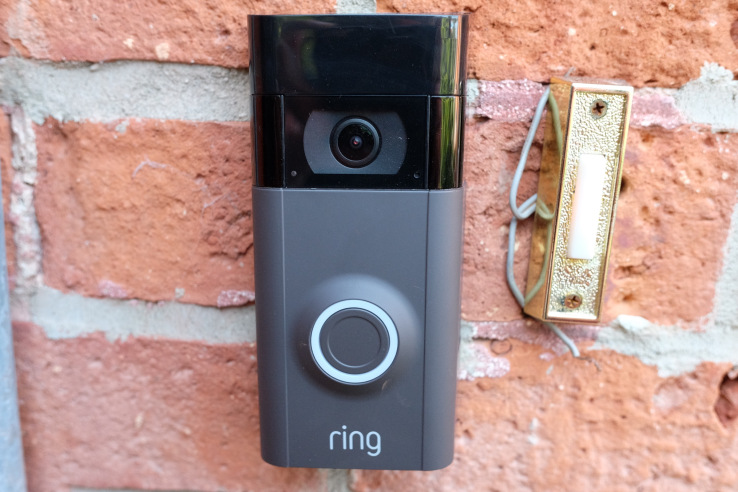

Ring is steadily releasing new products, but the Ring Video Doorbell 2 is the first re-think of its original, core product. The new version of the smart Wi-Fi doorbell that started it all still offers both wired and battery power options, but the batteries are now removable, and it’s got a few other upgrades including true 1080p HD video.
I’m a longtime user of the original, and it’s been one of the connected home gadgets I’ve found to be the most useful overall. The new design takes the strengths of the original and improves them, and I’ve found that they make a big difference in the product in terms of improved usability and convenience. The real strength of the Ring Video Doorbell 2, in particular, is its battery power option, which allows you to use it on houses (like mine) where wiring is either nonfunctional or not present for directly powering a traditional doorbell, or one of Ring’s higher-end options.
The Ring Video Doorbell 2 improves in this regard by offering removable battery packs, which can charge directly using micro USB, and which easily slot in and out of the bottom of the doorbell itself while it remains installed at your front door. The battery packs each offer between six and 12 months of use under normal conditions, or the equivalent of about 1,000 notification events, according to Ring. I obviously haven’t had a year to test it yet (the product was only recently released), but already it seems to be longer-lived than the original Ring Video Doorbell it replaces.

Swappable batteries also address the single biggest issue I had with the original: When the battery was drained, it mean going without a doorbell entirely for hours at a time while the unit charged. With the new model, you can pick up a spare battery pack for $20 and keep it charged and ready to swap in, meaning no down time at all between charges. It seems like a small thing, but after multiple years with the original, I can guarantee that the swappable battery packs will end up making a huge difference in terms of overall convenience when using the Ring.
The other big improvement here is an upgrade from 720p video to 1080p. Again, it seems like a relatively small thing – who’s concerned about getting great video fidelity out of a device they use mostly to tell delivery people it’s okay to just leave packages at the door, after all? But the difference in video quality is instantly apparent, and it extends beyond just resolution. Color and detail are all greatly improved, as is the overall smoothness of the footage captured. Night-vision capture is better, too.

Sample still frame from video captured by Ring Video Doorbell 2. Face obscured after the fact via Photoshop.
All of these are key features because a big part of what Ring provides with its connected video products is piece of mind. Better video means the new version of the Video Doorbell is better at home security, offering you a clearer picture of visitors, and of people who approach the door but don’t necessarily ring the doorbell when you have motion alerts enabled. Motion alerts also seem to work better and with nearly 100% reliability based on my experience.
 There are other video doorbell options out there, but Ring’s latest offering seems like a very good contender as the strongest of the lot. It combines easy installation (with all the hardware you need included) with great video and intercom audio quality, along with an easy to use app and convenient power options. Ring’s cloud service will cost you an additional $3 per month, or $30 per year, but it’s a worthwhile subscription in my opinion.
There are other video doorbell options out there, but Ring’s latest offering seems like a very good contender as the strongest of the lot. It combines easy installation (with all the hardware you need included) with great video and intercom audio quality, along with an easy to use app and convenient power options. Ring’s cloud service will cost you an additional $3 per month, or $30 per year, but it’s a worthwhile subscription in my opinion.
If you want something that ‘just works’ and that’s backed by a reliable company focused on solving this specific problem, the $199 Ring Video Doorbell 2 is probably your best bet for a connected video doorbell solution.

